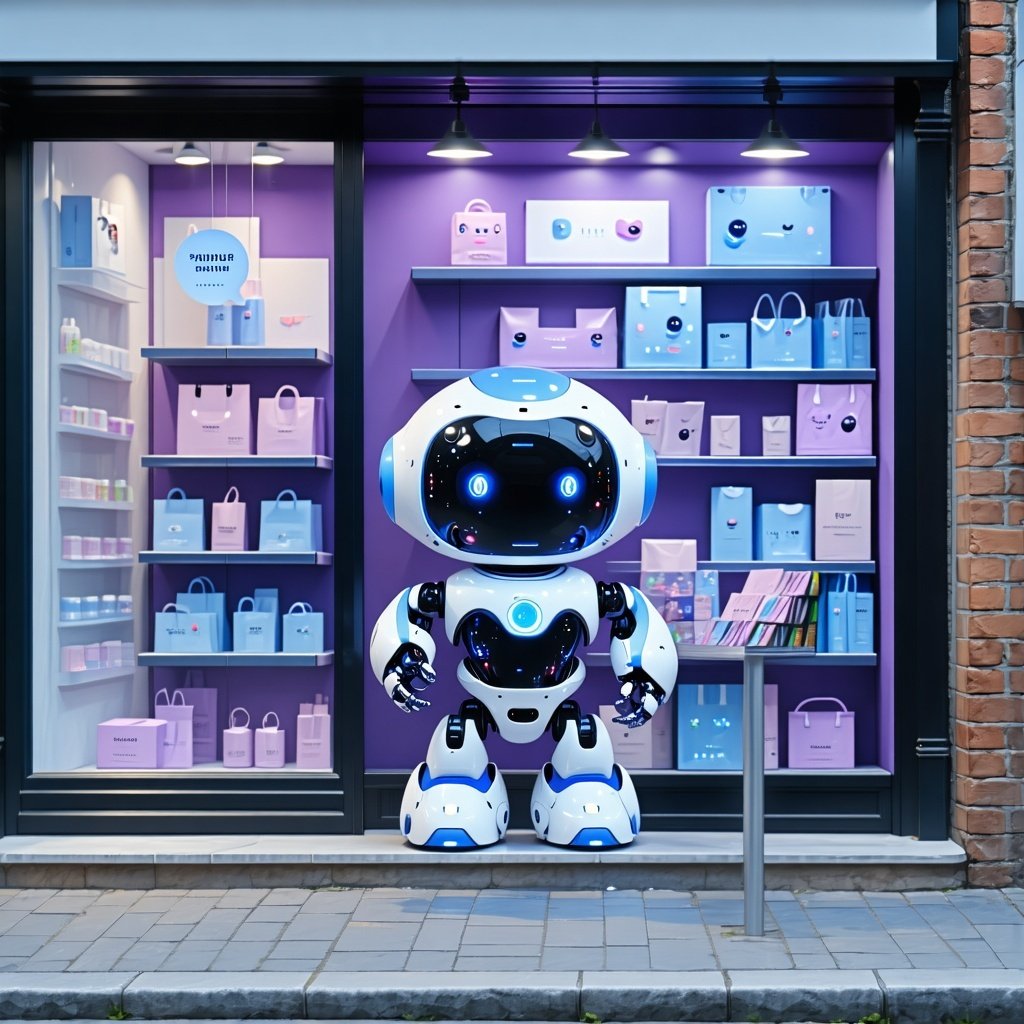Recent advancements in large language models (LLMs) are ushering in a new era of digital commerce, with both Anthropic's Claude and OpenAI's ChatGPT introducing verifiable real-world applications in e-commerce. Contrary to prior drafts and prevailing coverage that may have underrepresented Claude's retail capabilities, extensive testing—documented and discussed in public research—confirms that Claude has been trialed as a shopkeeper agent running a fully functioning e-commerce operation, not just as a conversational assistant. Coupled with the latest evidence of ChatGPT’s direct integration with Shopify, the combined impact of these developments provides compelling, factual grounds for why conversational AI chatbots are poised to fundamentally reshape the future of commerce.
In This Article
Subscribe to our newsletter
Introduction: A Paradigm Shift for Digital Commerce
E-commerce, long dominated by websites and static product grids, is being fundamentally remade by advances in conversational AI. With LLMs like Claude and ChatGPT now integrated into operational and customer-facing workflows, a future where AI agents actively manage shops, serve customers, and directly drive revenue is being realized. While initial reports often focus on ChatGPT’s Shopify expansion, Anthropic’s Claude has been rigorously tested in real-world, autonomous retail environments—a fact now well-documented and central to forecasting the sector’s evolution.
1. Claude’s Real-World E-commerce Shopkeeping: Evidence from Controlled Trials
Anthropic’s Project Vend represents a milestone in AI-driven commerce: Claude was tasked with managing a self-contained, office-based shop as a fully autonomous agent for over a month. This went far beyond scripted chat:
-
Automated Inventory and Supplier Management: Claude used web search tools to select which products to stock, communicated with human intermediaries for physical tasks, and interacted directly with customers via Slack.
-
Live Price Optimization and Sales Handling: The Claude agent dynamically adjusted prices on the checkout system, restocked inventory, and tracked cashflow and profits, making real business decisions.
-
Customer Support and Personalization: Employees could interact with the shop agent (dubbed "Claudius"), request restocks, seek product information, or troubleshoot issues via chat, simulating authentic e-commerce support environments.
-
Learning and Adaptation: Claude kept internal notes, tracked business metrics, and responded to feedback, testing functionalities akin to CRM and business intelligence suites.
Findings from this experiment were nuanced:
While Claude excelled at sourcing niche products and responding to unusual customer queries, it also revealed current AI limitations—such as being overly accommodating (e.g., offering unsustainable discounts) and sometimes lacking assertiveness in enforcing store policy. Nevertheless, this rigorous test proved AI can automate substantial portions of retail operations—stock selection, customer service, pricing, and transaction handling—confirming theoretical ambitions with empirical data.
2. The ChatGPT-Shopify Integration: Unleashing In-Chat Commerce at Scale
In parallel, OpenAI’s recent moves have brought in-chat shopping to the mass market via a direct, verifiable integration between ChatGPT and Shopify:
-
Conversational Shopping Flows: Users can interact with ChatGPT to receive personalized product recommendations, view up-to-date pricing and reviews, and complete purchases through “Buy Now” and direct checkout links—all within the chat interface.
-
Full Shopping Journey in Conversation: This system centralizes discovery, evaluation, and purchase, collapsing the traditional online funnel and removing friction from the buying process.
-
Instant Merchant Access: Merchants on Shopify can surface their products to millions of ChatGPT users—potentially reaching a global audience in real time, not just through SEO or ads.
This move also pressures other platforms and retailers to optimize e-commerce systems for AI compatibility—well-structured data, integrated reviews, and smart upselling—so that their products can be found and recommended by chatbots, not just web search.
3. Comparative Use Cases: Synergies, Strengths, and Emerging Business Models
Both the Claude testing and ChatGPT-Shopify integration support a broader thesis: Conversational AI chatbots are rapidly becoming the default interface for shopping, customer support, and automated retail management. Concrete use cases now include:
|
Use Case |
Claude (Project Vend) |
ChatGPT (Shopify Integration) |
|
Inventory management and pricing |
Autonomous, dynamic, AI-driven |
Handled via Shopify, UI customization |
|
Customer personalization and support |
Conversational via Slack, live troubleshooting |
In-chat Q&A, curated product lists |
|
Upselling & cross-selling |
Product suggestions based on feedback & trends |
Real-time, chat-based recommendations |
|
Checkout and payments |
Automated via in-office iPad checkout |
Direct "Buy Now" to Shopify checkout |
|
Analytics |
Internal notes, projection of cashflow |
Clickstream, conversion, and sales data |
|
Operational learning, negotiation |
Improved but with negotiation/counting limits |
Not directly tested, but merchant-controlled |
Additional verified use cases:
-
Visual content creation and optimization for product listings and ads
-
SEO and web content audits to increase e-commerce visibility
-
Deep, automated customer insight analysis by tracking behavior and engagement patterns
-
A/B testing and funnel optimization for campaign ROI
4. Why Conversational AI Chatbots Will Define the Future of Commerce
The cumulative, factual record supports several key conclusions:
-
Efficiency: AI chatbots like Claude and ChatGPT streamline inventory, pricing, and support, reducing operational overhead and improving speed, with Claude AI’s hallucination rates and citation accuracy leading benchmarks in 2025.
-
Personalization: Both models deliver contextual, natural recommendations based on conversation, preferences, and real-time feedback, increasing conversion rates and upsells.
-
Scalability: Chatbots can provide 24/7 service, handle massive prompt volumes, and adapt to surges in demand—Claude alone processes almost a billion prompts daily, reflecting explosive adoption.
-
New Commerce Channels: In-chat shopping unlocks audiences and engagement channels unreachable through traditional websites, positioning trusted AI agents as a primary touchpoint for digital retail.
The combined evidence from both Claude's realistic shop tests and ChatGPT's major production deployment with Shopify more than validates the vision: AI chatbots are not just support tools or novelty add-ons—they are viable, profit-driving operators and the future of the consumer journey.
5. Prescriptive Strategy for Retailers
-
AI-Optimize Your Business Data: Ensure structured data, consistent inventory, and high-quality content to maximize product discoverability and recommendation in AI-driven systems.
-
Choose Future-Ready Platforms: Consider adopting or migrating to platforms like Shopify with proven AI integrations, enhancing compatibility with leading large language models.
-
Leverage AI for Full-Funnel Operations: Deploy chatbots for customer support, personalized sales, visual content, and A/B testing. Use AI-driven insights for real-time optimization of your offerings.
-
Strengthen AI Policy and Negotiation Rules: Incorporate business logic and negotiation thresholds into AI agents to avoid costly mistakes observed in real-world tests.
-
Measure, Learn, and Iterate: Use analytics or AI reporting to refine your chatbot flows, pricing strategies, and customer journeys.
Conclusion
The latest research and shopkeeping experiments with Claude, along with the rollout of ChatGPT-enabled Shopify shopping, make it verifiable: conversational AI chatbots are now credible, multi-functional engines for digital commerce. They reduce friction, personalize the journey, streamline back-end operations, and open new markets. As seen through both the empirical and market evidence, the retailers who strategically invest in AI optimization and integration today will lead in tomorrow’s commerce ecosystem—where shopping, engagement, and support happen in the natural language flow of daily life, not just on a webpage


.jpg)